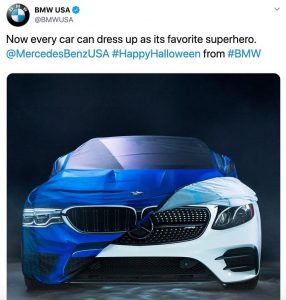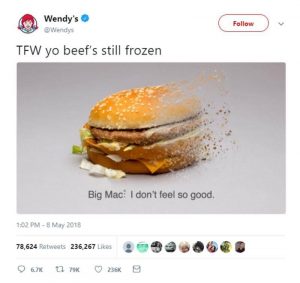What’s better than claiming your product is the best? Claiming that it’s better than your competitor’s, of course! That’s the idea behind comparative advertising, a marketing tactic that directly pits brands against each other. It can be useful for brands looking to launch a new product or enter a new market. By highlighting differences and declaring superiority, companies hcan position themselves as the “better” choice in the eyes of consumers.
A study by the University of California found that comparative advertising can be an effective tool for new brands entering a market. The study found that comparative advertising can help new brands increase market share by over 5%.
Advantages of comparative advertising
One of the main benefits of comparative advertising is that it helps in brand differentiation. By highlighting the unique features of a product in comparison to others in the market, a stronger brand identity can be created. This can lead to brand awareness and your brand will be like a neon sign in a sea of monotony–impossible to miss. Besides, it can help to enhance credibility. Back up claims about a product’s quality or superiority with direct comparisons to competitors. Your competitors will quake in fear at your undeniable superiority.
Did you know that comparative advertising isn’t just to promote your brand, but it’s also a great way to promote healthy competition? By highlighting the advantages, you’re not only differentiating yourself from the pack but also inspiring competitors to step up their game. Comparative advertising also empowers consumers with valuable information to make purchase decisions. By directly comparing products, consumers can evaluate the features, benefits and pricing of each option. It also gives them a better understanding of which product best suits their needs. When you highlight the superiority of your brand, you’ll be swaying consumers toward buying from you. It’s like a Jedi mind trick, but for marketing.
Real-life examples of comparative advertising
BMW
For Halloween 2022, BMW poke fun at Mercedes-Benz. In their tweet, they shared an image of a Mercedes-Benz sports car dressed up in a BMW costume, implying that every Mercedes wants to be a BMW. The tweet quickly went viral, racking up tens of thousands of retweets and likes. What made this tweet effective was the way BMW used humour to assert themselves as the superior brand while keeping things light-hearted. Taking a cue from BMW, brands can use comparative advertising to stand out while engaging their audience through humour.

Wendy’s
Remember when the ending of Avengers: Infinity War was the talk of the town? Well, Wendy’s social media team decided to hop on the meme bandwagon with a hilarious tweet. The meme featured the iconic scene where Thanos turns half of all living creatures into dust, but with a twist: A McDonald’s Big Mac also turns to dust. What really made the meme stand out was the caption: “[That feeling when] your beef’s still frozen.” Wendy’s never uses frozen beef, while McDonald’s is known for their frozen patties. It’s a clever way to claim superiority without being too aggressive or insulting. And it’s clear that it worked–the tweet went viral and had people talking about Wendy’s commitment to using fresh and not frozen beef.
Samsung
Have you ever been stuck in a never-ending line waiting for the latest iPhone to drop? If so, this Samsung Galaxy II ad will speak right to your soul. As die-hard Apple fans suddenly confronted by a group of Samsung users. A bunch of regular folks who are already enjoying the latest smartphone sensation: The Samsung Galaxy II. The Galaxy II users extol the virtues of its massive screen and lightning-fast 4G speed. Then, the Apple devotees begin to realise that there might just be a better option out there. By the end of the 60-sec ad, it’s clear that Samsung has earned their respect with a simple, yet powerful message: “The next big thing is already here”.
Potential risks of comparative advertising
While comparative advertising can be an effective marketing tactic, it carries risks too. If the ad is poorly received, it can harm your brand’s reputation or give the impression that you are seeking attention at any cost. For example, Bud Light initiated a comparative campaign against its competitors highlighting their use of corn syrup. However, the campaign failed to gain traction and did not resonate with the intended audience.
While comparative advertising can be a tempting strategy, it can actually end up giving a boost to your competition if you’re not careful. If you’re a well-known brand comparing your products to a lesser-known one, you run the risk of coming across as a bully and damaging your own reputation. Furthermore, your comparative ad may end up introducing customers to your competitors and making them more aware of their brand. This could end up undermining your own market position and hurt your business in the long run.
Comparative advertising can have legal implications for your brand too. If your ads cross legal boundaries, it could result in legal actions being taken. Therefore, it is crucial to ensure that your legal team thoroughly reviews the campaign before launch.
Comparative advertising can be a powerful tool. However, to reap these benefits, it’s crucial to execute it effectively and ethically. If you don’t play by the rules, it can backfire and damage your reputation, drive customers away and hurt your bottom line.







